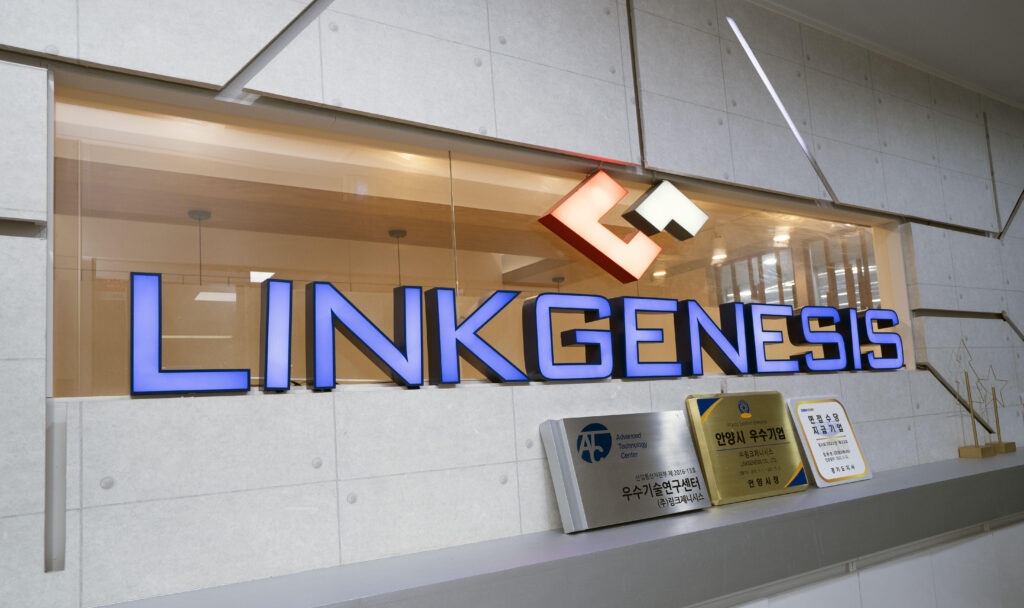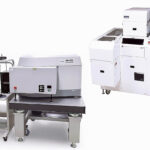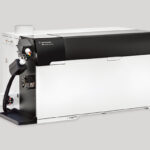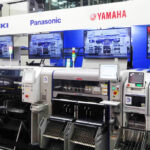ASIA ELECTRONICS INDUSTRYYOUR WINDOW TO SMART MANUFACTURING
Linkgenesis Sets New Trend for Smart Factory Market
What smart factory is to factory automation is what Korean smart factory software solution maker Linkgenesis’ future is to its today.
As Jung Sung Woo, CEO with Linkgenesis puts it “Factory automation is all about how to automate and unman the whole bunch of production lines across a manufacturing facility to save costs and improve productivity, but the concept of the smart factory goes beyond the factory floor, enabling factory floor workers to collect, synchronize, and analyze various production data to track, predict, prevent what goes wrong with production process. Smart factory is a souped-up evolution of factory automation”
True enough, the beauty of the smart factory is to keep track of all data across a whole range supply chain management system from product designs to parts and components ordering to production to logistics even to AS services.
The goal is to manage and analyze all data in sync with all supply chain processes not only to diagnose the causes of product defects and feedback them into actual production to prevent the repetitions, but also to optimize production environments for productivity gains.
As computing and communications technologies have greatly improved, AI or artificial intelligence and machine learning technology is even joining the matrix, enabling even smart factory solutions to inspect and sort out various microscopic defects in sync with an array of sensors.
That is the compelling trend that Linkgenesis is now riding on for its future growth.
Since its inception in 2003, the smart solution provider has mainly offered its smart factory solutions for semiconductor chip-making equipment industry, enabling a fleet of chip-making front-end and back-end equipment to communicate with a main server computer and each other to share data like manufacturing recipe or task results.

Stake Out Smart Factory Market
The company is now expanding its expertise and know-how there into other industries, as manufacturers across a vast reach of industries from secondary battery to solar cell manufacturing makers are rebuilding or considering to remake their manufacturing premises around a smart factory platform.
“We started out our business with the semiconductor industry, supplying a SEMI-certified communication protocol standard-based factory automation solutions. Then, we went beyond to serve FPD or flat panel display, secondary battery and even solar cell manufacturing market, as there have been strong demand for our solutions across those industries,” CEO Jung added.
“For example, secondary battery manufacturers are adopting our smart manufacturing solutions to precisely and accurately predict actual production volume and execute it on schedule, because their customers are calling for them to make on-time and precise delivery. The solution allows them to perform what manual labors can’t do, for example, enabling them to track and predict defect rates and then precisely measure actual production volume. That’s where the forte of the smart manufacturing solution system comes in,” he said.
Linkgenesis is now supplying a wide variety of smart manufacturing solutions, AI vision solution and Test RPA, serving a wide variety of industries from automotive to semiconductor to display panels to secondary batteries to solar cells to other machinery and manufacturing sectors.
When it comes to its flagship smart manufacturing solution business, the company has a variety of product portfolio from machine-to-machine connectivity or communications to real-time monitoring and analysis to data collection and management to deep learning-based image analysis solution to CIM, or computer-integrated manufacturing system even to product test solution.
According to Linkgenesis, the FPD industry represents 60% of its sales, as its solutions are widely used with a myriad of FPD manufacturing equipment. The chip-making industry accounts for 30%, with the remaining 20% by secondary battery industry.
Beyond Semiconductor Market
Based on SEMI SECS and GEM communications standard between equipment and equipment, its XComPRO and XGemPro solutions are mainly used with chip-making and display panel fabrication equipment to manage machine-to-machine connectivity. All combined, more than 36,000 copies have been sold across more than 420 OEM vendors.
The XGemPRO and XComPRO solution are a sort of off-the-shelf and plug-and-play solution that are available anytime. The company has also XGem PLC solution that support SECS and GEM from PLC, or programmable logic controller-based equipment.
SECS and GEM is a sort of machine-to-machine communications protocols that SEMI, an industry association for electronics design and manufacturing supply chain sets as a standard protocol for M2M communications.
“Look through chip-making and FPD fabrication factory floors and clean rooms, and you can see a myriad of machines, equipment and server computers strung together. To streamline the communications among them, SEMI, an industry association for semiconductor and FPD equipment makers set standard protocols like SECS and GEM. Our smart manufacturing solution are compliant with those standards,” added CEO Jung.
For example, Linkgenesis’ XComPRO and XGemPRO solution can convert various senor signal data on vibration, temperature, and humidity into standard protocol to upload them to server computers.
Its “LOOKAZ solution is a sort of data acquisition, management, analysis, and real-time monitoring solution that allows factory operators to collect, manage, monitor, and analyze data coming from tones of sensors and equipment.
Bet on AI for Future Growth

True enough, the smart factory solution is part of IoT. The role of such solution as XGem and XCom solution is to blaze a path for collecting and uploading data in a standard format. Then, solution like “LOOKAZ” is to monitor and analyze data to help program and reprogram workout scenario and manufacturing recipe, depending on the analyzed and monitored data pattern.
For example, its smart factory solution can help create the most optimal production environment not only by gathering, diagnosing, and analyzing data on temperature, humidity, and heat, but also tracking, finding, and feeding back causes of defects.
Linkgenesis’ smart factory solution doesn’t stop there. A short for vision learning advanced detection, its VLAD solution is a sort of deep learning algorithm-based image and vision analysis solution.
For example, it can help display panel maker to detect, locate, inspect, and even count the number microscopic defects and defect patterns on OLED or LCD display pixels. Its applications vary from display panels, electronics parts and components, secondary batteries, food, security, and automotive parts.
The company has also a product line-up for test automation solution. A short for machine auto tester, its MAT series of test automation software solution is a verification platform to test and verify various products in complex test environments. The MAT is widely used in a variety of industries from automotive to mobile phones to semiconductor to home appliances to IoT and defense industries.
When asked about what Linkgenesis’ core competency is, CEO Jung said, “Our competitive edges are a better and fast understanding on market trends or consumer needs, a fast commercialization of the technologies in need, and better creation of easy-to-use and user-friendly working environment like intuitive UI and UX.”
Added he, “We also focus on data management and analysis methodology, because smart manufacturing is all about how to make the most use of data for trouble shooting and prediction.”




